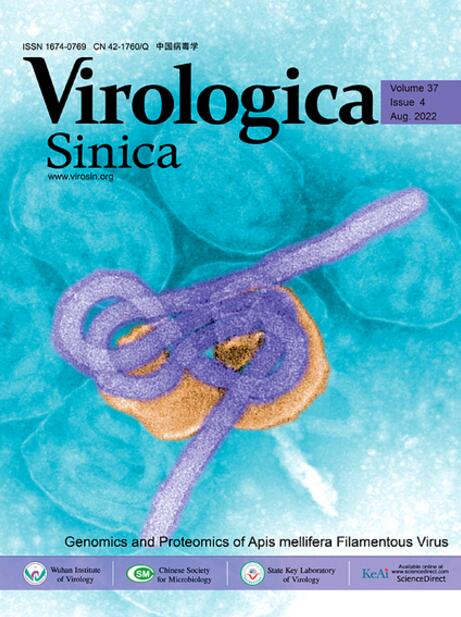基因流动及其散发外溢:中国野禽H10和N5禽流感病毒与H10N5人感染病例
IF 4
3区 医学
Q1 Medicine
引用次数: 0
摘要
2024年1月30日,中国宣布了首例人感染H10N5流感病例。在此之前,已经报告了H10N7和H10N8的人间病例。现在应当重新审查禽流感病毒H10和N5亚型的演变和未来流行病学趋势。本研究分析了首个人源H10N5亚型AIV (A/Zhejiang/ZJU01/2023)的重配特征,以及近十年来野鸟源H10和N5亚型AIV的进化动态。结果表明,人源性H10N5 AIV具有较低的致病性。鉴定出A/bean_goose/Korea/KNU-10/2022(H10N7)和A/mallard/Novosibirsk_region/962k/2018(H12N5)为潜在的重配亲本。该病毒自2022年以来一直存在,孟加拉国报告了几次隔离。系统发育分析表明,中国H10Ny和HxN5亚型病毒在东亚-澳大利亚(东部)和中亚-印度(西部)的迁徙路线上聚类不同。H10Ny和HxN5 AIV重组株可能通过意外溢出引起人类感染。与欧洲、美洲和中国的长江三角洲、珠江三角洲不同,亚洲东北部的迁徙航线可能是另一个AIV进化、突变和重组的中心,应密切监测,以确保公众的安全。本文章由计算机程序翻译,如有差异,请以英文原文为准。
Gene flow and its sporadic spillover: H10 and N5 avian influenza viruses from wild birds and the H10N5 human cases in China
On January 30, 2024, China announced the first human case of H10N5 influenza infection. Prior to this, human cases of H10N7 and H10N8 had been reported. It is now appropriate to re-examine the evolution and future epidemiological trends of the H10 and N5 subtypes of avian influenza viruses (AIVs). In this study, we analyzed the reassortment characteristics of the first human-derived H10N5 AIV (A/Zhejiang/ZJU01/2023), as well as the evolutionary dynamics of the wild bird-derived H10 and N5 subtypes of AIVs over the past decade. Our findings indicate that the human-derived H10N5 AIV exhibited low pathogenicity. A/bean_goose/Korea/KNU-10/2022(H10N7) and A/mallard/Novosibirsk_region/962k/2018(H12N5) were identified as the potential reassortment parents. The virus has existed since 2022 and several isolations have been reported in Bangladesh. Phylogenetic analysis showed that H10Ny and HxN5 AIVs in China are clustered differently based on the East Asian-Australian (eastern) and Central Asian-Indian (western) migratory flyways. The H10Ny and HxN5 AIV reassortant strains may cause human infections through accidental spillover. It is possible that another center of AIV evolution, mutation, and reassortment may be developing along the migratory flyways in northeastern Asia, distinct from Europe, the Americas, and China's Yangtze River Delta and Pearl River Delta, which should be closely monitored to ensure the safety of the public.
求助全文
通过发布文献求助,成功后即可免费获取论文全文。
去求助
来源期刊

Virologica Sinica
Biochemistry, Genetics and Molecular Biology-Molecular Medicine
CiteScore
7.70
自引率
1.80%
发文量
3149
期刊介绍:
Virologica Sinica is an international journal which aims at presenting the cutting-edge research on viruses all over the world. The journal publishes peer-reviewed original research articles, reviews, and letters to the editor, to encompass the latest developments in all branches of virology, including research on animal, plant and microbe viruses. The journal welcomes articles on virus discovery and characterization, viral epidemiology, viral pathogenesis, virus-host interaction, vaccine development, antiviral agents and therapies, and virus related bio-techniques. Virologica Sinica, the official journal of Chinese Society for Microbiology, will serve as a platform for the communication and exchange of academic information and ideas in an international context.
Electronic ISSN: 1995-820X; Print ISSN: 1674-0769
 求助内容:
求助内容: 应助结果提醒方式:
应助结果提醒方式:


